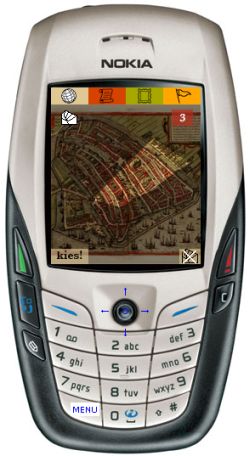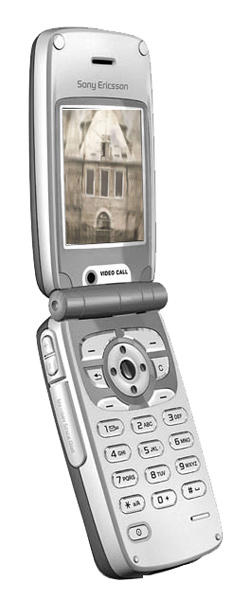 gamephone interface preview
gamephone interface preview videophone interface preview
videophone interface preview
The 11-12 year old students are invited to the Waag building, one of Amsterdam's medieval citygates, for three special project days. During network tests a Waag Society development-team has run into strange frequency problems and found the Amsterdam UMTS-network to be magically interfering with a different time period: the medieval era. A recording is made of the medieval city's bailiff getting in contact with the here and now: 21st century Amsterdam. Through some technical difficulties and religious misunderstandings he mistakes the intruders to be pilgrims coming to 1550 Amsterdam to visit the special relic: the Holy Host associated with The Miracle of Amsterdam. Because it recently got lost he suggests a deal: he can provide easy access to citizenship if we can help him retrieve the holy relic. The students take up their roles as competing pilgrims and thus step into the game's story.
For one to two days, players roam through the city in small groups. GPS makes it possible to know the position of your team (and of other players or objects). To prove they're the most worthy order of pilgrims, a team will need to demonstrate their knowledge of medieval Amsterdam by doing location-based media-assignments on the city's history. As they wander through the streets of medieval Amsterdam, they get in virtual phone contact with characters that provide information on locations and on the strange disappearing of the holy relic. In the meantime, they're competing with the other teams. GPS technology and mobile phones turn the city into a medieval playingfield. Teams can boobytrap eachother by placing bombs on the medieval streets: With a click on their gamephone the players can drop a virtual bomb at their current location that will go off in the face of a passing opponent, temporarily killing communication facilities with HQ. Running into other teams starts a confrontation between the Pilgrims - their Order determines who wins, taking away hard-earned experience points, co called Days of Poorterschap (medieval Days of Citizenship).
UMTS makes it possible for each team to be in touch with their Headquarters (HQ) by mobile video telephone and to exchange multimedia. During the pilot, HQ is located at the Waag building. Using internet-access from their special laptop-based HQ interface, information is looked up and historical references are checked out. HQ also sees the bigger picture, has the overview as to what the other teams are up to and works out the team's strategy. HQ can guide teams toward scoring locations and is responsible for processing the media made on location and sending relevant media or information to the players out in the city. After every day of playing, all teams gather at HQ to see not only who did best, but to collectively reflect on the media produced, the answers given and the strategic decisions taken during the game. More on how the game matches official curriculum goals can be read in the downloadable didactic design document (In Dutch only).